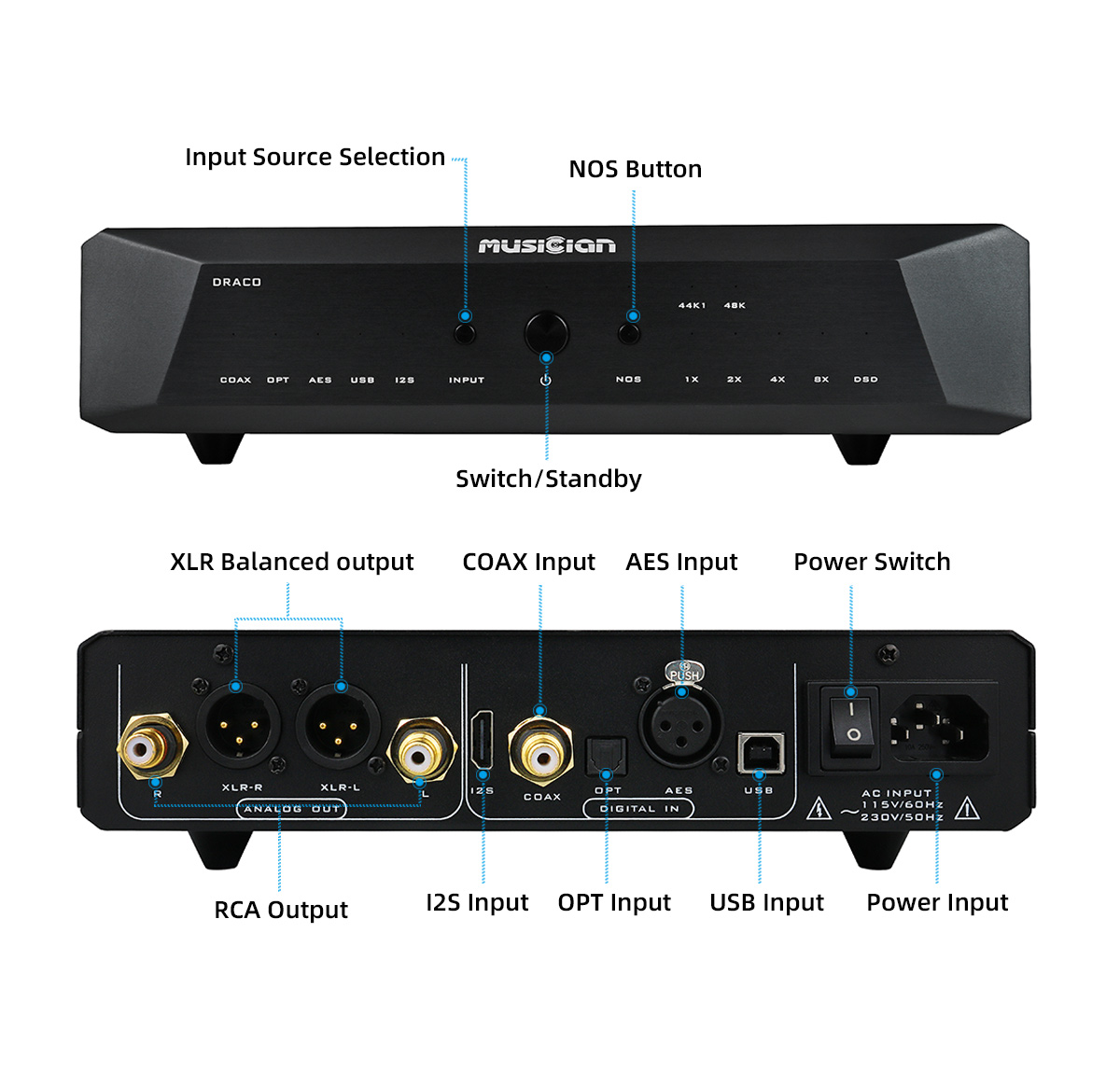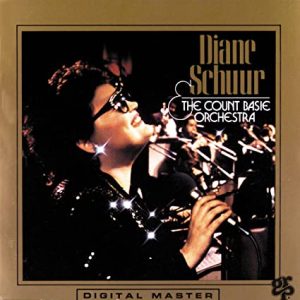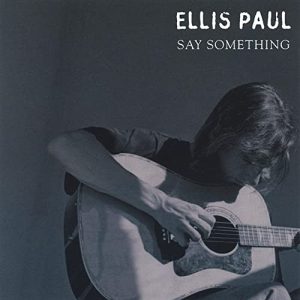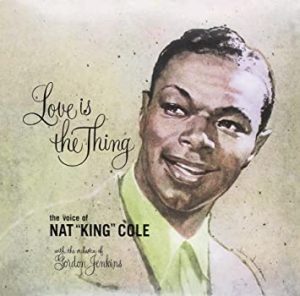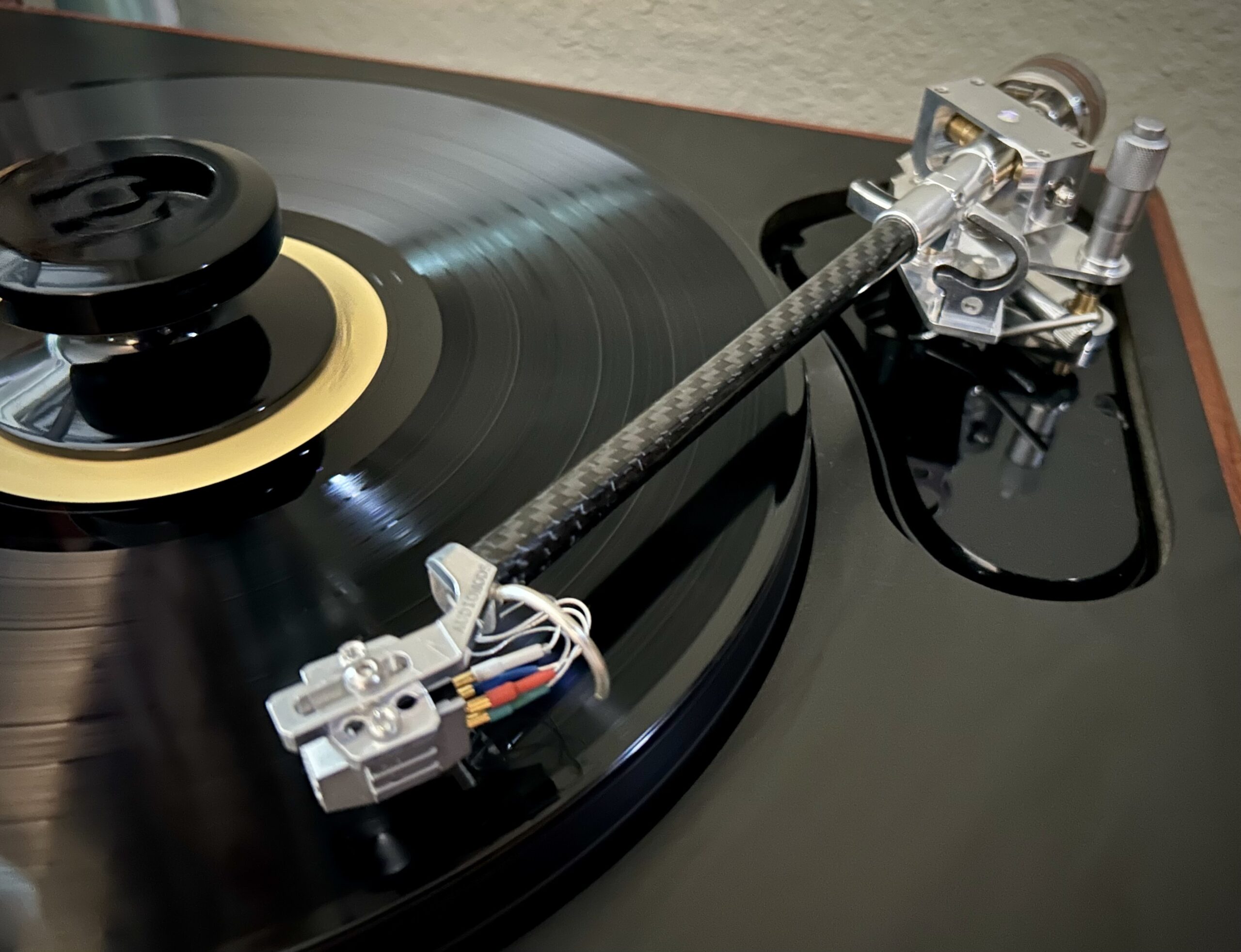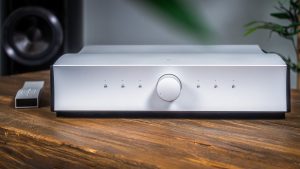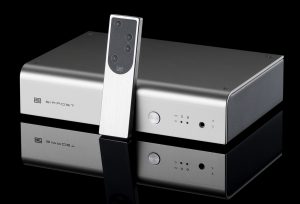In the realm of digital to analog converters there has been an ongoing trend of increasingly advanced circuitry, the addition of layer upon layer of "lifestyle" convenience features, and the promise of higher sound quality at increasingly lower prices. Certainly this sounds like the best of times for the cost conscious audiophile, but is that really the case? When a person shops for a new DAC they are given the choice of Bluetooth connectivity, built in pre-amp controls, headphone outputs, and with integrated music server compatibility and streaming options. Somewhere within the plethora of all the features and associated conveniences, the core function of being a high-performance digital to analog converter becomes pushed aside and conveniently forgotten. This is an unfortunate turn of events for the audiophile who values the quality of musical reproduction, and desires to keep the cost of a new purchase at a reasonable level.
The Draco is the latest offering from Musician Audio, and is an R-2R ladder DAC with all the critical design elements to ensure high performance playback, and yet sells for a remarkably affordable price of $749.95. For that modest sum you get a DAC circuit that is remarkably sophisticated for this price point, a non-oversampling option, PCM oversampling up to 1536 kHz, and DSD 1024 capability. Musician Audio has already made a splash in the audio market with its Pegasus DAC and Monoceros pre-amplifier, the Draco appears to be another quality addition to its growing portfolio. Power Holdings Inc is the North American distributor for Musician Audio, and generously sent out their first review sample so that it can be introduced to Positive Feedback readers.
The case of the Draco measures 280W x 250D x 50H mm, and weighs 8.8 pounds. The face-plate is a CNC machined aluminum panel, and the chassis has a powder coated base finish with an overlay of matte black paint. The fit and finish of the Draco speaks directly to the care Musician Audio puts into the assembly of their products, and easily outclasses the vast majority of components that are sold in this price range. The face plate has three flush mounted buttons to control power, input selection, and select engage the non-oversampling mode. There are no gaudy LCD screens, or piercing blue lights to draw attention to the Draco, rather it possesses an understated appearance that provides the user with uncomplicated controls that allows straightforward operation. The digital inputs on the back panel are coaxial, optical, AES, USB, and I2S. The Draco has both single ended RCA outputs and XLR jacks for balanced output. An IEC power socket is on the far left hand corner, and a master power control is located right next to it. Musician Audio has designed a full array of functionality into the Draco, and has wrapped it in a nicely finished chassis that projects an aura of exclusivity that is normally associated with the boutique high-end audio companies.
It certainly is true that the Musician Audio Draco digital to audio converter is affordably priced, this does not mean it contains mediocre parts or a primitive circuit design. Other companies selling products in this market niche would use mainstream DAC chips that are readily available, off the shelf USB receiver modules, and op-amp output stages. Musician Audio does not build their entry level DAC this way, as the Draco contains a proprietary digital board with custom programming for the DAC and receiver chips as well as the USB 2.0 input stage. The power supply on this DAC contains an O-ring transformer wound from single crystal copper wire, and a linear output stage that is a genuine balanced circuit. Every important aspect of the design and production of the Draco is taken care of in house at Musician Audio. What the prospective owner gets is a component that is deigned by engineers who care about music and its reproduction, and look for creative and innovative ways to maximize the performance of their products while maintaining a price point that brings it into the reach of the majority of those who enjoy our hobby.
My reference DAC is an Audio Magic Kukama, which is based on a highly modified Texas Instrument board, and makes use of the legendary Burr Brown PCM1704 chip set. The Kukama does not have an onboard USB board, and I have chosen the Singxer SU-1 USB/S/PDIF converter and a VH Audio Pulsar AG digital cable. The Kukama is still a reference quality component when playing standard Redbook discs, so I look forward to hearing how the comparisons to the Draco come out. The digital server is a Mac Mini running Audirvana, and the USB signal is routed to an Intona 7055B USB isolation device by Wireworld Platinum Starlight 8.0 USB cables. The Kukama and Draco will feed a Halcro DM8 pre-amplifier and a pair of of AVM Audio AMP Essential mono-block power amplifiers. Speakers are a pair of JBL 4365 monitors which has the frequencies below 40 Hz taken care of by a pair of Velodyne HGS12 servo subwoofers. Wireworld Eclipse 8 speaker wire and Silver Eclipse 8 interconnects pass the signal along, while AC power is handled by a TLP TF130 power conditioner and PI Audio Group power cords.
Musician Audio recommends a 300 hour break in process. After completing this conditioning process I began my listening sessions with the DAC configured for a conventional oversampling format. The Draco does not allow for the selection of the oversampling level from the face of the DAC, it has to be selected from the on board menu of the music server program. There were no issues with pairing the computer with the DAC, and toggling through the various oversampling points was not difficult to accomplish. In terms of sonic presentation, I found the Draco to be a remarkably well balanced component, and I immediately noticed a different style of presentation of the music. The Draco has a rich and vibrant tonal balance that allows the music to flow from the system. Vocals are full, violins are elegantly textured, and piano chords have a believable weight and balance. On "You Can Have It" by Diane Schuur with the Count Basie Orchestra (Diane Schuur & The Count Basie Orchestra; GRP Records B0000001Q3) the electric bass is nimble and clean, and there are no issues with overhang or ill defined notes. The horn section is forceful, but if you listen carefully it is not difficult to hear the individual instruments as they are clearly defined. What I found very encouraging on this song is how the Draco presents Schuur's voice, as it has such a easy ebb and flow through the song, and when she belts out certain passages the depth and power of her voice are articulated in a natural and organic manner. The Kukama DAC I use places more emphasis on the upper registers, and presents as having a bit more detail at the micro level, but cannot match the Draco for the overall purity of the all important midrange region. The voicing of the Draco reminds me of a good turntable in many ways, as it unforced and natural in the presentation of music.
With the Draco the real magic is unveiled when the Non-Oversampling mode is engaged. I would swear that arcane sorcery and even the black arts must have been evoked, as the NOS mode is not as audibly linear when compared to the conventional oversampling configuration, yet the music gains an aura of aliveness and tonal expressiveness that needs to be heard to gain a full understanding of the differences. "Conversation With A Ghost" by Ellis Paul (Say Something; Eastern Front B000003GV1) is a sparse composition with acoustic guitar, violin, and a captivating harmony provided by Patty Griffin. With the Draco in NOS mode the acoustic space of this recording appreciably expands, and creates a significantly larger soundstage in every vector. The guitar notes have a haunting tone, and both the element of the initial pluck and the following decay are immediate and realistic in every way. While the violin passages are languid, there is an edge and texture that gives the instrument a realistic aura. The vocals are remarkably authentic, and the blended harmonies have the proper presentation, and yet the individual artists lines are distinct and easy to follow. With NOS mode selected on the Draco I am struck by the parallels that the music has, as if it were played through a classic tube amplifier. The presentation of space, the elegance of the midrange, and the refined and somewhat relaxed upper registers are clearly evident with this component. The Draco brings back memories of systems I have owned built around Quicksilver or Cary amplifiers, and I could listen to this DAC for hours on end set up this way.
Direct Stream Digital, or DSD as it is commonly referred to, is considered the latest generation of digital playback, and is championed as the high-water mark of digital audio. There is debate among audiophiles about the qualities of sound provided by the DSD format, but until recently this was an option that resided exclusively on expensive high end digital to analog converters. These days DSD conversion is available on a greater array of components, but this opens up the question of how well the format is implemented on these modestly priced digital to analog converters. I have a small collection of DSD128 files that I use for evaluations, and I loaded up "Ain't Misbehavin'"(Love Is The Thing; Analog Productions XAPP824D64) by Nat King Cole in order to put the Musician Audio DAC through its paces. The Draco in DSD mode has an even stronger resemblance to a quality analog front end, and still retains all the inherent strengths of the digital format. I have mentioned earlier that there are similarities between this DAC and analog playback, well, in DSD mode those strengths are even more self evident. Vocals are incredibly smooth and textured, while strings have a dense texture that is full and vibrant. The recording style from this period is instantly recognizable with this recording, and the Draco recreates it in a way that retains the sonic fingerprint and yet still conveys the beauty of the music. While DSD files do not make up a significant portion of my music library, I can say these songs are a joy to listen to on the Draco.
Audio engineers operate in the realm of applied science where electrical theory, physics, and manufacturing technology are the tools they wield to create the remarkable components that make our hobby possible. On one hand there are visionaries and trail blazers who push the envelope of audio design, and there is another group of designers whose goal is to find ways to improve performance and build components that incorporate refinements to existing technology that can attain higher levels of audio reproduction that the majority of us in this hobby can realistically attain. When listening to the products that Musician Audio has released, I clearly see evidence of a commitment to quality designs and a vision of superior sound reproduction. I listened to the Draco digital to analog converter for many hours, and sometimes it was for the goal of evaluating the component for review, and other times it was just for the pleasure of listening to music. This DAC represents a remarkable package of circuit design, a sophisticated manufacturing process, and an overarching desire for an engaging musical experience. From the technical side of the coin you have a sophisticated R2R ladder DAC, custom programmed chips, a substantial power supply, and a chassis that is built to a level you would expect to see supporting a far more expensive component. The degree of flexibility designed into the DAC is impressive, as it can support standard Redbook conversion, offers a Non-Oversampling option, and is capable of DSD 1024 playback. While all of these indicators point to a solidly engineered component, the litmus test is how well does the Draco reproduce music? The short answer is "very well."
When you do get to physically hold the Draco in your own two hands, and have an in depth listening session, it may very well take a bit of effort to remember you are experiencing a component that can be obtained for less than $800! From my perspective I see Musician Audio traveling the same footsteps that some of the iconic audio companies that defined our hobby in the early 1980s and into the 1990s. In some respects these were the halcyon days of high performance audio as hobbyists could realistically obtain high performance audio playback for what could be considered a reasonable outlay of cash. Companies such as Belles Audio, PS Audio, Superphon, Quicksilver, and a dozen others offered musically engaging gear. In some respects Musician Audio has rolled back the hands of time and gifts today's audiophile with components built with the same kind of vision and pursuit of high quality audio playback. Several months ago when I was involved with my listening sessions of the Monoceros pre-amplifier I could not shake the feeling that I was hearing a reincarnation of a 1990s era Jeff Rowland component. I do not make that comparison glibly, as I have owned the Rowland Consummate pre-amplifier and Model 5 amplifier, and I have fond memories of those pieces. At the end of the day what really matter is that the Draco excels at presenting music in an engaging manner. Even though this DAC is not a state of the art component it enables the cost conscious audiophile to have more than a taste of the good stuff in audio, and show that genuine high fidelity is not solely in the orbit of those with deep pockets. In the critical midband area the Draco has a presentation that emulates the tonal characteristics of a well executed tube amplifier, has an excellent portrayal of acoustic space, and retrieves a higher degree of low level detail from a recording when compared to other digital to analog converters that compete at this price point. If you value musical reproduction over an array of features and displays, then the Draco by Musician Audio should be on your list of components to audition, as I have yet to hear any digital to analog at this price point that can bring music alive the way this one does.
Draco DAC
Retail: $749.95
Musician Audio
North American Distributor
Power Holdings Inc
https://power-holdings-inc.com




